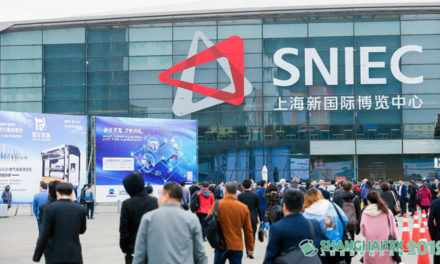 SHEIN’s Center of Innovation for Garment Manufacturing (CIGM) has achieved the Zero Waste to Landfill Management System certification by TÜV Rheinland (TÜVR), an independent third-party audit partner. The CIGM is SHEIN’s third facility to receive this certification, with SHEIN’s two other facilities achieving the certification earlier this year in February.
SHEIN’s Center of Innovation for Garment Manufacturing (CIGM) has achieved the Zero Waste to Landfill Management System certification by TÜV Rheinland (TÜVR), an independent third-party audit partner. The CIGM is SHEIN’s third facility to receive this certification, with SHEIN’s two other facilities achieving the certification earlier this year in February.
TÜVR’s Zero to Landfill Management System certification evaluates a company’s waste management practices, specifically its ability to manage waste without sending it to landfills, by examining both the processes the company uses, and how effective these processes are.
As part of the certification requirements, the team at the CIGM worked to identify solutions and processes that would minimise the facility’s impact on land pollution. This was done by driving the organisation to significantly decrease the amount of waste sent to landfills and emphasizing a “reduce, reuse and recycle” approach towards waste, while ensuring this transition was carried out in a systematic way.
This involved the team adopting a comprehensive waste management strategy aligned with TÜVR’s certification standards that focus on identifying sources of waste at the CIGM, implementing solutions that reduce the waste at its source, and improving the solid waste management process through the following approach: focusing on greater efficiency, extracting higher value from the waste materials, while at the same time ensuring that the implemented processes would be scalable.
Addressing waste across SHEIN’s operations
Over the past few years, SHEIN has made progress by implementing various initiatives that address industrial and textile waste issues across its supply chain. Waste-recycling projects were initiated by SHEIN across 14 of its facilities in 2023, resulting in over 86% of the industrial waste generated at these facilities – equivalent to over 32,800 metric tons- being recycled or thermal recovered as at the end of December 2023. SHEIN’s innovative on-demand business model plays a crucial role in its overall waste management strategy. By utilising small batch ordering based on trend research, SHEIN seeks to maintain consistently low unsold inventory rates. Items are produced in small initial batches of 100-200 pieces, and real-time customer feedback is gathered and products that are in demand are restocked. This automated process enables SHEIN’s suppliers to make what its customers want, while helping to minimize overproduction, resulting in more affordable prices for customers and lower levels of waste.
As at October 2024, SHEIN has collected textile waste from its suppliers and repurposed them into 2,200 fabric bags. The collected textile waste has also been used in energy efficiency improvement projects at suppliers’ facilities where it has been recycled and turned into insulation material for steam pipes.
Efforts have also been made to encourage SHEIN’s suppliers to adopt the use of innovative water-saving production process like digital thermal transfer printing (DTTP) and cool denim transfer printing. DTTP is a zero-water-waste printing method verified by Bureau Veritas, and the use of this technology is estimated to have saved over 290,000 cubic meters of water and over 32,600 MWh of electricity in 2023 as compared to traditional screen-printing methods. Cool transfer denim printing technology was verified by Bureau Veritas in October 2023 to use 70.5% less water than traditional denim apparel washing methods. It uses high-fixation ink in place of conventional indigo colorants to print patterns directly onto the denim fabric using a digital printer.
In May 2023, SHEIN announced a partnership with Queen of Raw, a global circular economy technology company, to support SHEIN’s ambition of becoming a leading rescuer of high-quality deadstock materials. In 2023, 19,927 meters of high-quality deadstock materials – such as polyester, recycled polyester, spandex, nylon and rayon – were rescued through this partnership. According to data from Queen of Raw’s proprietary Materia MX software, this has helped SHEIN avoid consuming new textile resources, conserving over 155,000 cubic meters of water, over 3,000 kg of chemicals and over 28 metric tons of CO2e that would have been generated by using new fabric in 2023.
















